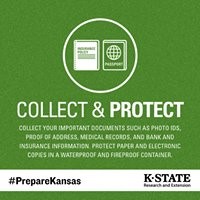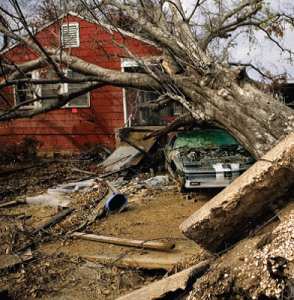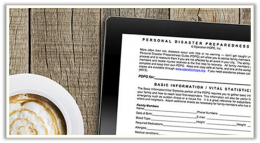September is National Preparedness Month. It is also our annual Prepare Kansas online challenge. Prepare Kansas 2017 will provide tips on getting financially prepared ahead of disasters and emergencies. This year’s program will be conducted through the K-State Research and Extension Facebook page. No registration is required, so Kansans and anyone interested in planning ahead for emergencies can follow on Facebook and this blog at any time during September, pick up handy information and interact with K-State extension specialists and agents. Today’s post is written by Elizabeth Kiss, Family Resource Management Specialist.
If you had a few precious minutes to leave your home or office, what would you take? This week’s challenge is to create a financial grab-and-go kit. 
Why is this important? If you have your most important documents and information at hand in a grab-and-go kit, it can help to get you back on firm financial footing more quickly.
Your kit should be a waterproof, fireproof container that can be taken with you at a moment’s notice. Be sure to keep it in a secure place in your home.
What should you include in your kit? At a minimum you’ll want to have some cash and the financial information and personal identification needed to conduct your day-to-day financial life.
Other information to include in your grab-and-go kit:
- Personal information such as copies of driver’s licenses, passport, and social security cards and key documents that may be needed to restore your financial records
- Account information such as financial account numbers; copies of ATM, debit, and credit cards; insurance cards, policies, or other proof of insurance coverage; and contact information for all financial service and insurance providers
- Household inventory
- Safe deposit key
- Information about prescription medication
- Contact information (phone, email, or web site) for family members, doctors, veterinarians
- Pocket notebook and pen or pencil
Family records, such as birth, marriage, or death certificates may be kept in a safe deposit box. If they are, consider making copies for your grab-and-go box. Other items that may be in safe deposit box include wills, contracts, deeds, stocks, and bond as well as titles to vehicles. Again, if the original is in a safe deposit box, you still may want to make copies for your grab-and-go box.
Want to learn more? Download this fact sheet from the K-State Research and Extension bookstore https://www.bookstore.ksre.k-state.edu/pubs/MF3055.pdf



